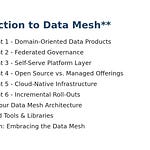Welcome back, fellow Backend Developers! Today, we’re strapping on our flux capacitors and hurtling into a not-so-distant future where quantum computers threaten to turn our once-super-robust RSA and ECC handshakes into toddler-level puzzles. But fear not! With post-quantum cryptography (PQC) on the horizon, we can fortify our APIs against those cheeky Shor’s algorithm–powered attackers. In this article, we’ll explore the performance trade-offs you’ll encounter, outline a phased migration strategy, share a hands-on hybrid-KEM Python example, and point you to the best tools and services in the wild. Ready? Let’s quantum-leap!
Context: The Quantum Threat and Backend APIs
The cryptographic community has spoken: large-scale quantum computers are coming. When they arrive, they’ll silence RSA and ECC faster than you can say “2048-bit prime.” If your backend APIs—be they RESTful or gRPC—rely on TLS handshakes secured by classical algorithms, you’ll want a post-quantum plan yesterday.
Key insights from our research:
• Post-quantum schemes like CRYSTALS-Kyber and Dilithium bump handshake latency by 25–50% and chew up 2–4× more CPU, but once warmed, throughput can rival classical counterparts.
• A phased, crypto-agile rollout—starting with hybrid key exchanges in low-risk zones—lets you default back to ECC/RSA if PQC hiccups.
• Lightweight hybrid-KEM wrappers combining liboqs + PyCryptodome via a shared HKDF enable side-by-side PQC integration without a full-stack rewrite.
• You can choose open-source freedom (OpenQuantumSafe, PQCrypto) or managed rides (AWS KMS hybrid ECDSA-Kyber, Azure Quantum Keys).
• Benchmarks—key-gen, encaps/decaps, handshake latency, throughput, CPU/memory profiles—are non-negotiable for real-world algorithm selection.
Deep Dive: Performance Trade-offs of Post-Quantum Cryptography
Let’s get serious for a moment. Post-quantum schemes defend us against future quantum adversaries, but they’re not magic bullets. Here’s the lowdown:
Handshake Latency Increase
Classical (ECC/RSA): ~5–10ms under typical server loads
PQC (Kyber): ~8–15ms (≈25–50% more)
Impact: Slightly longer TLS handshakes, particularly on cold starts or first connections.
CPU & Memory Overhead
Key Generation: 2×–4× slower for Kyber/Dilithium vs P-256/ECDSA
Encapsulation/Decapsulation: 2×–3× more CPU cycles
Key/Signature Sizes: PQC public keys can be 1–2 KB vs ECC’s sub-100 bytes; signatures likewise bulkier.
Throughput & Pipelining
Warm pipelines (persistent connections, session resumption) mitigate latency, delivering classical-matching throughput.
Bulk data encryption (e.g., TLS record encryption) remains unchanged once the handshake is done.
Takeaway: You’ll pay more CPU and slightly more time per handshake, but real-world throughput for sustained traffic can level up to classical performance if you tune your thread pools, enable session reuse, and leverage hardware acceleration where possible.
Phased Migration Strategies for Backend API Security
Diving headfirst into PQC isn’t recommended—unless you enjoy rolling back live services at 3 AM. Instead, follow a controlled, agile process:
Crypto-Agile Inventory
Scan your REST/gRPC endpoints, client apps, mobile SDKs, and IoT devices.
Document which endpoints initiate TLS/TCP handshakes, certificate lifetimes, and cipher suites in use.
Hybrid Key Exchange in Low-Risk Zones
Enable a dual-stack TLS handshake: classical (ECDHE) + PQC (Kyber) in dev/staging.
Monitor handshake success rates, CPU spikes, memory usage, and response times.
Rollout Flags & CI/CD Guards
Introduce feature flags in your deployment pipeline to toggle PQC on/off.
On handshake failure or resource exhaustion, automatically default back to ECC/RSA.
Canary in Production
Target non-critical services or a small user subset first.
Closely observe SLA metrics, error rates, and system health dashboards.
Full-Scale Go-Live
After satisfactory benchmarks in canaries, progressively expand to all services.
Document rollback procedures in runbooks—just in case.
By embedding rollback mechanisms and keeping classical fallbacks, you ensure business continuity while gathering critical performance data.
Implementing a Hybrid KEM Wrapper in Python
Time for code! Below is a simplified Python example using liboqs (via the OpenQuantumSafe project) and PyCryptodome to perform a hybrid key encapsulation:
# requirements:
# pip install pycryptodome python-oqs
import oqs
from Crypto.Hash import HKDF, SHA256
from Crypto.Cipher import AES
from Crypto.Random import get_random_bytes
def hybrid_kem_key_exchange():
# 1. Classical ECDH key pair (curve25519)
from Crypto.PublicKey import ECC
ecdh_key = ECC.generate(curve='curve25519')
ecdh_pub = ecdh_key.public_key().export_key(format='DER')
# 2. PQC KEM (Kyber) via liboqs
with oqs.KeyEncapsulation('Kyber512') as kem:
pqc_pub, ciphertext = kem.generate_keypair(), None
ciphertext, shared_secret_pqc = kem.encap_secret(pqc_pub)
# 3. Combine secrets with HKDF
# Client & server both compute:
hkdf = HKDF.HKDF(
master=ecdh_key.d.to_bytes(32, 'big') + shared_secret_pqc,
key_len=32,
salt=None,
hashmod=SHA256
)
symmetric_key = hkdf.derive(ecdh_key.d.to_bytes(32, 'big') + shared_secret_pqc)
# 4. Use symmetric_key for AES encryption
cipher = AES.new(symmetric_key, AES.MODE_GCM)
nonce = cipher.nonce
ciphertext_data, tag = cipher.encrypt_and_digest(b"Hello, PQC hybrid world!")
return {
'ecdh_public': ecdh_pub,
'pqc_public': pqc_pub,
'kem_ciphertext': ciphertext,
'aes': {
'nonce': nonce,
'ciphertext': ciphertext_data,
'tag': tag
}
}
if __name__ == "__main__":
result = hybrid_kem_key_exchange()
print("Hybrid KEM handshake complete. Artifact sizes:")
print(f" - ECDH pubkey: {len(result['ecdh_public'])} bytes")
print(f" - PQC pubkey: {len(result['pqc_public'])} bytes")
print(f" - KEM ciphertext: {len(result['kem_ciphertext'])} bytes")
print(f" - AES ciphertext: {len(result['aes']['ciphertext'])} bytes")
This code:
Generates a Curve25519 ECDH key pair.
Uses Kyber512 for PQC key encapsulation (via liboqs).
Derives a shared symmetric key via HKDF(SHA-256).
Performs a simple AES-GCM encryption of a test message.
You can adapt this wrapper into your existing TLS stack or gRPC interceptor, handing off the symmetric_key to your record-layer implementation.
Evaluating and Benchmarking: The Data-Driven Path
Never fly blind. Create a test harness (e.g., using crt26/pqc-evaluation-tools) that measures:
• Key-gen time for each algorithm (classical vs PQC)
• Encapsulation/decapsulation latency
• Full TLS handshake latency under varying payload sizes
• CPU utilization, memory footprint, and thread contention
• Throughput for sustained concurrent connections
• Performance on constrained devices (RasPi, ARM microcontrollers)
Armed with these metrics, you can make informed decisions: choose Kyber512 for lower CPU or Kyber768 for higher security. Or pick Dilithium2 vs Dilithium3 based on signature speed.
Ecosystem Options: DIY vs Managed Services
Once you’ve proven the concept, pick your poison:
Open-Source Toolkits
• OpenQuantumSafe (liboqs, integrations for OpenSSL, BoringSSL)
• PQCrypto (Rust and C++ libraries for PQC primitives)
• python-oqs / oqs-go / oqs-rs wrappers
Managed Cloud Services
• AWS KMS hybrid keys: ECDSA-Kyber key policies, zero code changes in clients
• Azure Key Vault (Quantum Keys): provides PQC key variants via standard APIs
• Google Cloud — Emerging PQC support in Certificate Authority Service
DIY gives you total control and customization; managed offerings let you migrate in minutes with minimal dev overhead.
References & Example Libraries
• OpenQuantumSafe (liboqs): https://github.com/open-quantum-safe/liboqs
• PQCrypto: https://github.com/PQCryptoOrg
• AWS KMS Hybrid Keys: https://aws.amazon.com/kms/features/#hybrid
• Azure Quantum Keys: https://azure.microsoft.com/services/key-vault/quantum/
• crt26/pqc-evaluation-tools: https://github.com/crt26/pqc-evaluation-tools
Closing Stanza: See You on the Quantum Side
So there you have it—your whirlwind tour of post-quantum cryptography for backend APIs. You’ve learned the performance costs, you’ve seen a hands-on hybrid KEM example, and you’ve got a roadmap for migration and benchmarking. As quantum computers inch closer, we’ll be ready, cipher suites at the ready!
Until next time, fellow Backend Developers—may your handshakes be short, your keys be large, and your migrations roll out without alarming your paging system. Swing by tomorrow for another dose of backend charm and technical insight.
Stay safe, stay agile, and keep those CPU cores warm!
— Your pal at The Backend Developers












Share this post